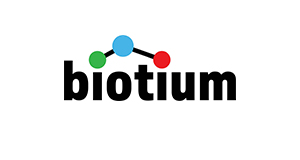p63 (Squamous, Basal & Myoepithelial Cell Marker) (TP63/2428), CF740 conjugate, 0.1mg/mL
p63 (Squamous, Basal & Myoepithelial Cell Marker) (TP63/2428), CF740 conjugate, 0.1mg/mL
SKU
BTMBNC742428-100
Packaging Unit
100 uL
Manufacturer
Biotium
Availability:
loading...
Price is loading...
Description: p63 is a homolog of the tumor suppressor p53. It is identified in basal cells in the epithelial layers of a variety of tissues, including epidermis, cervix, urothelium, breast and prostate. p63 was detected in nuclei of the basal epithelium in normal prostate glands; however, it was not expressed in malignant tumors of the prostate. As a result, p63 has been reported as a useful marker for differentiating benign from malignant lesions in the prostate, particularly when used in combination with markers of high molecular weight cytokeratins and the prostate-specific marker AMACR (P504S). p63 has also been shown to be a sensitive marker for lung squamous cell carcinomas (SqCC), with a sensitivity of ~90%. Specificity for lung SqCC, vs. lung adenocarcinoma (LADC), is approximately 80%. In breast tissue, p63 has been identified in myoepithelial cells of normal ducts.Primary antibodies are available purified, or with a selection of fluorescent CF® Dyes and other labels. CF® Dyes offer exceptional brightness and photostability. Note: Conjugates of blue fluorescent dyes like CF®405S and CF®405M are not recommended for detecting low abundance targets, because blue dyes have lower fluorescence and can give higher non-specific background than other dye colors.
Product origin: Animal - Mus musculus (mouse), Bos taurus (bovine)
Conjugate: CF740
Concentration: 0.1 mg/mL
Storage buffer: PBS, 0.1% rBSA, 0.05% azide
Clone: TP63/2428
Immunogen: Recombinant full-length human p63 protein
Antibody Reactivity: p63
Entrez Gene ID: 8626
Z-Antibody Applications: Flow, intracellular (verified)/IHC, FFPE (verified)
Verified AB Applications: Flow (intracellular) (verified)/IHC (FFPE) (verified)
Antibody Application Notes: Higher concentration may be required for direct detection using primary antibody conjugates than for indirect detection with secondary antibody/Immunohistology (formalin): 1-2 ug/mL for 30 minutes at RT/Staining of formalin-fixed tissues requires boiling tissue sections in 10 mM citrate buffer, pH 6.0, for 10-20 minutes followed by cooling at RT for 20 minutes/Optimal dilution for a specific application should be determined by user
Product origin: Animal - Mus musculus (mouse), Bos taurus (bovine)
Conjugate: CF740
Concentration: 0.1 mg/mL
Storage buffer: PBS, 0.1% rBSA, 0.05% azide
Clone: TP63/2428
Immunogen: Recombinant full-length human p63 protein
Antibody Reactivity: p63
Entrez Gene ID: 8626
Z-Antibody Applications: Flow, intracellular (verified)/IHC, FFPE (verified)
Verified AB Applications: Flow (intracellular) (verified)/IHC (FFPE) (verified)
Antibody Application Notes: Higher concentration may be required for direct detection using primary antibody conjugates than for indirect detection with secondary antibody/Immunohistology (formalin): 1-2 ug/mL for 30 minutes at RT/Staining of formalin-fixed tissues requires boiling tissue sections in 10 mM citrate buffer, pH 6.0, for 10-20 minutes followed by cooling at RT for 20 minutes/Optimal dilution for a specific application should be determined by user
| SKU | BTMBNC742428-100 |
|---|---|
| Manufacturer | Biotium |
| Manufacturer SKU | BNC742428-100 |
| Package Unit | 100 uL |
| Quantity Unit | STK |
| Reactivity | Human |
| Clonality | Monoclonal |
| Application | Flow Cytometry, Immunohistochemistry |
| Isotype | IgG2b kappa |
| Host | Mouse |
| Conjugate | Conjugated, CF740 |
| Product information (PDF) | Download |
| MSDS (PDF) | Download |

 Deutsch
Deutsch







